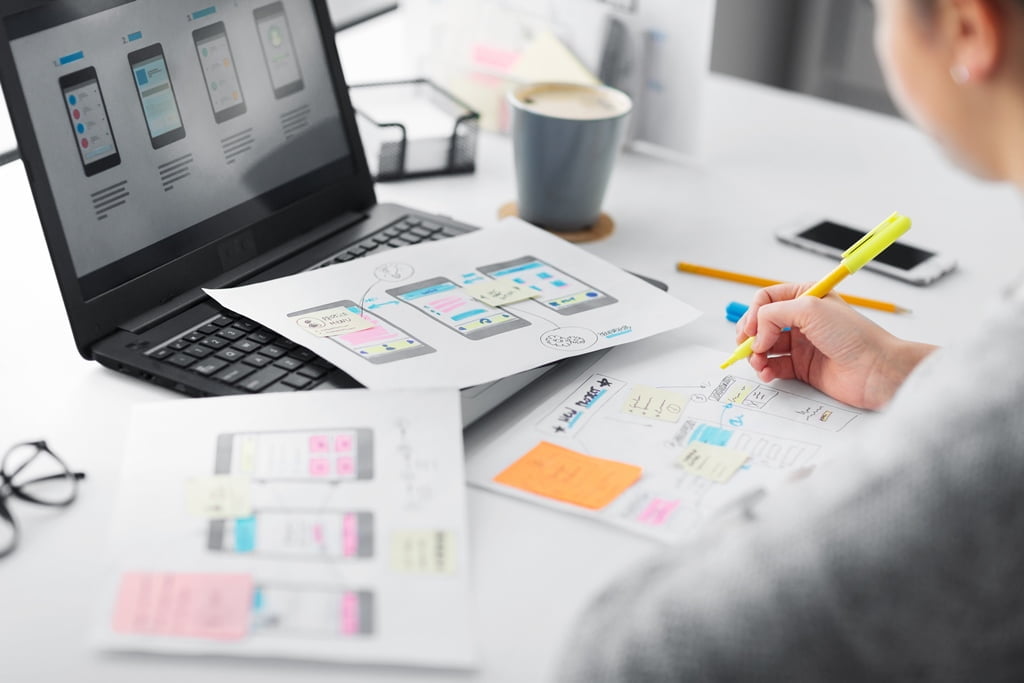The process of building a framework that allows users to discover content quickly is known as navigation design. Menus, labels, and structure are the three components of navigation design. Menus contain elements such as buttons, menu bars, drop-down menus, and other graphic components that help the user discover what they’re searching for. Labels are words or descriptions used to identify sections or areas of a website. Structure refers to how the website’s content parts are structured. The user experience is greatly influenced by navigation design. As a result, it’s essential to comprehend how user psychology influences navigation design.

The Psychology of Navigation
Designers must understand the psychology of navigation and interaction to create intuitive user interfaces. Designers can build user interfaces that are simple to use and comprehend by knowing how users think and behave.
Designers must understand how consumers see and process information to create successful navigation. These are some important navigation psychology concepts to consider for designers:
- Hick’s Law: According to Hick’s Law, the time it takes a person to make a decision is exactly proportionate to the number of options available. This indicates that the more alternatives a user has, the longer it will take them to make a decision. As a result, designers should attempt to limit the number of navigation alternatives.
- Miller’s Law: Miller’s Law states that the human brain can only comprehend a certain amount of information at once and that the typical individual can remember 5 to 9 items of information at once. This means that designers should keep the number of navigation choices to a minimum and show them in a logical and ordered manner.
- Fitts’s Law: According to Fitts’ Law, the time it takes a user to click on a target is proportional to the distance between the target and the user’s cursor, as well as the size of the target. This means that designers should make navigation components bigger and simpler to click on, as well as arrange them in prominent locations.
- Gestalt Principles: Gestalt principles describe how humans perceive and organize information. The concept of proximity, for example, states that people tend to group items that are close together. Based on the similarity principle, individuals like to group items that look similar. These criteria should be followed by designers when creating clear and ordered navigation components.
The Psychology of Interaction
The way people engage with a product, such as by clicking buttons or filling out forms, is referred to as interaction. Effective interaction design should be intuitive and simple to use, allowing people to do their tasks quickly and effectively.
Designers must understand how users think and react to create effective interactions. These are some fundamental interaction psychology concepts to consider for designers:
- The Endowment Effect: Based on the Endowment Effect, individuals appreciate things more when they believe they own them. This idea can be applied by designers to build interactive features that offer consumers a sense of ownership, such as personalized profiles or changeable settings.
- The Von Restorff Effect: According to the Von Restorff Effect, people are more inclined to remember things that stand out from their surroundings. This technique can be used by designers to create interactive components that stand out and are readily identifiable, such as brightly colored buttons or distinctive iconography.
- The Zeigarnik Effect: As shown by the Zeigarnik Effect, people remember unfinished tasks more than completed ones. Designers can apply this approach to create interactive features like progress bars or reminders that urge users to complete a job.
- Feedback and Affordances: Interaction design is incomplete without feedback and affordances. The response a user receives after doing an action, such as a confirmation message after completing a form, is referred to as feedback. Affordances are visual signals that indicate how an element should be used, such as a button that seems to be clickable. Clear feedback and affordances should be used by designers to help consumers understand how to engage with the product.
- Cognitive Load: The amount of intellectual work necessary to execute a task is referred to as cognitive load. By making activities simple and intuitive to accomplish, interaction design should attempt to reduce cognitive load. A form, for example, should be made to be as user-friendly as feasible, with clear labeling and input fields.
Navigation design needs more than simply knowledge of usability principles; it requires understanding the fundamental psychology that determines user behavior. You can design a navigation system that fulfills the user’s psychological demands and delivers an intuitive and easy-to-use experience by taking into account elements such as visual signals, hierarchy, labels, popularity, consistency, and signposts.
Developing an easy-to-use user interface is essential for the efficacy of any product. Designers should design user interfaces that are simple to use and comprehend by understanding the psychology of navigation and interaction. To produce successful navigation, use concepts such as Hick’s Law, Miller’s Law, Fitts’ Law, and the Gestalt Principles, while to create effective interaction, use principles such as the Endowment Effect, Von Restorff Effect, Zeigarnik Effect, feedback, and affordances, and cognitive load.







helloI really like your writing so a lot share we keep up a correspondence extra approximately your post on AOL I need an expert in this house to unravel my problem May be that is you Taking a look ahead to see you
Simply wish to say your article is as amazing The clearness in your post is just nice and i could assume youre an expert on this subject Well with your permission let me to grab your feed to keep updated with forthcoming post Thanks a million and please carry on the gratifying work
helloI really like your writing so a lot share we keep up a correspondence extra approximately your post on AOL I need an expert in this house to unravel my problem May be that is you Taking a look ahead to see you
Thanks I have recently been looking for info about this subject for a while and yours is the greatest I have discovered so far However what in regards to the bottom line Are you certain in regards to the supply
Attractive section of content I just stumbled upon your blog and in accession capital to assert that I get actually enjoyed account your blog posts Anyway I will be subscribing to your augment and even I achievement you access consistently fast
I was recommended this website by my cousin I am not sure whether this post is written by him as nobody else know such detailed about my trouble You are amazing Thanks
What i do not realize is in fact how you are no longer actually much more wellfavored than you might be right now Youre very intelligent You recognize thus considerably in relation to this topic made me in my view believe it from numerous numerous angles Its like men and women are not fascinated until it is one thing to do with Lady gaga Your own stuffs excellent All the time handle it up